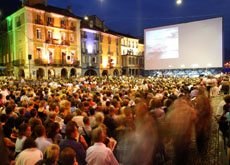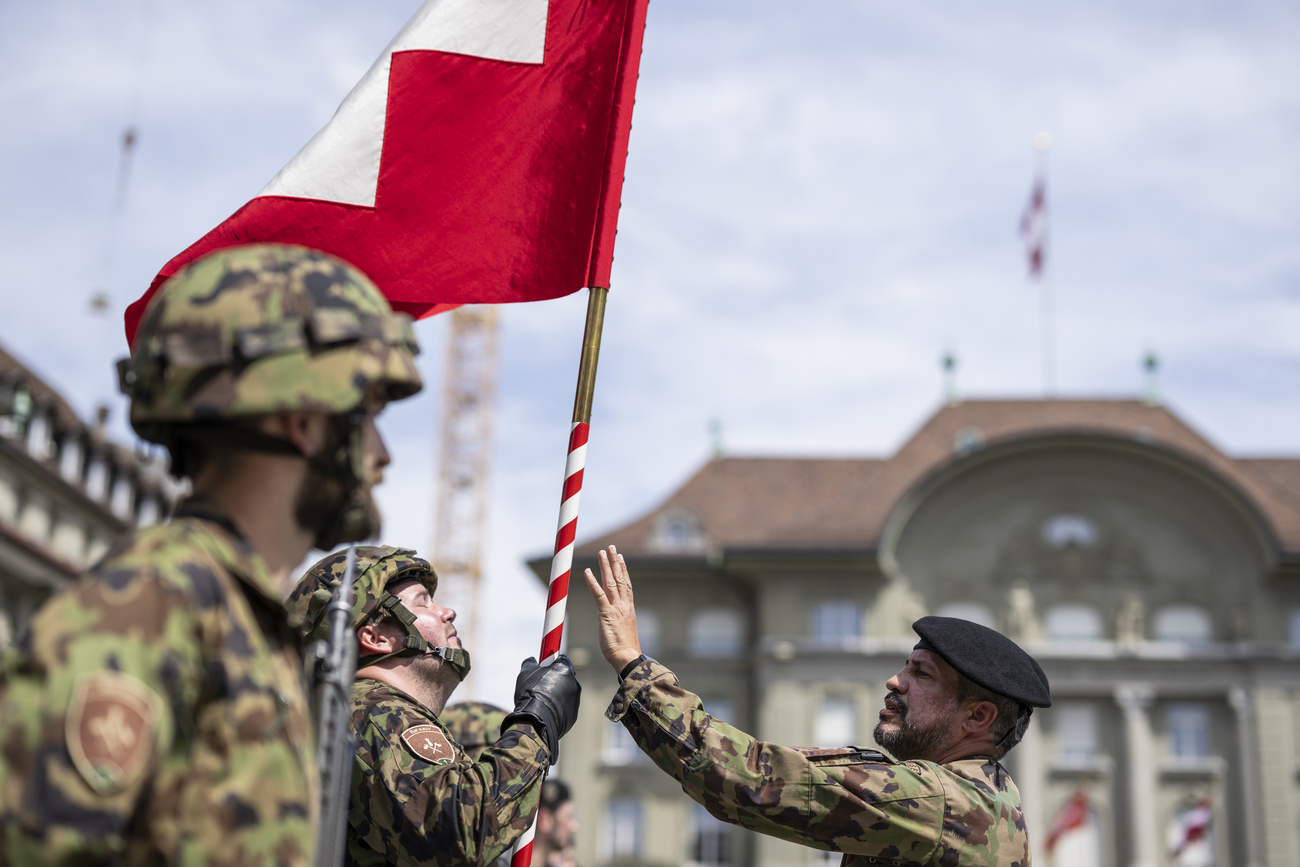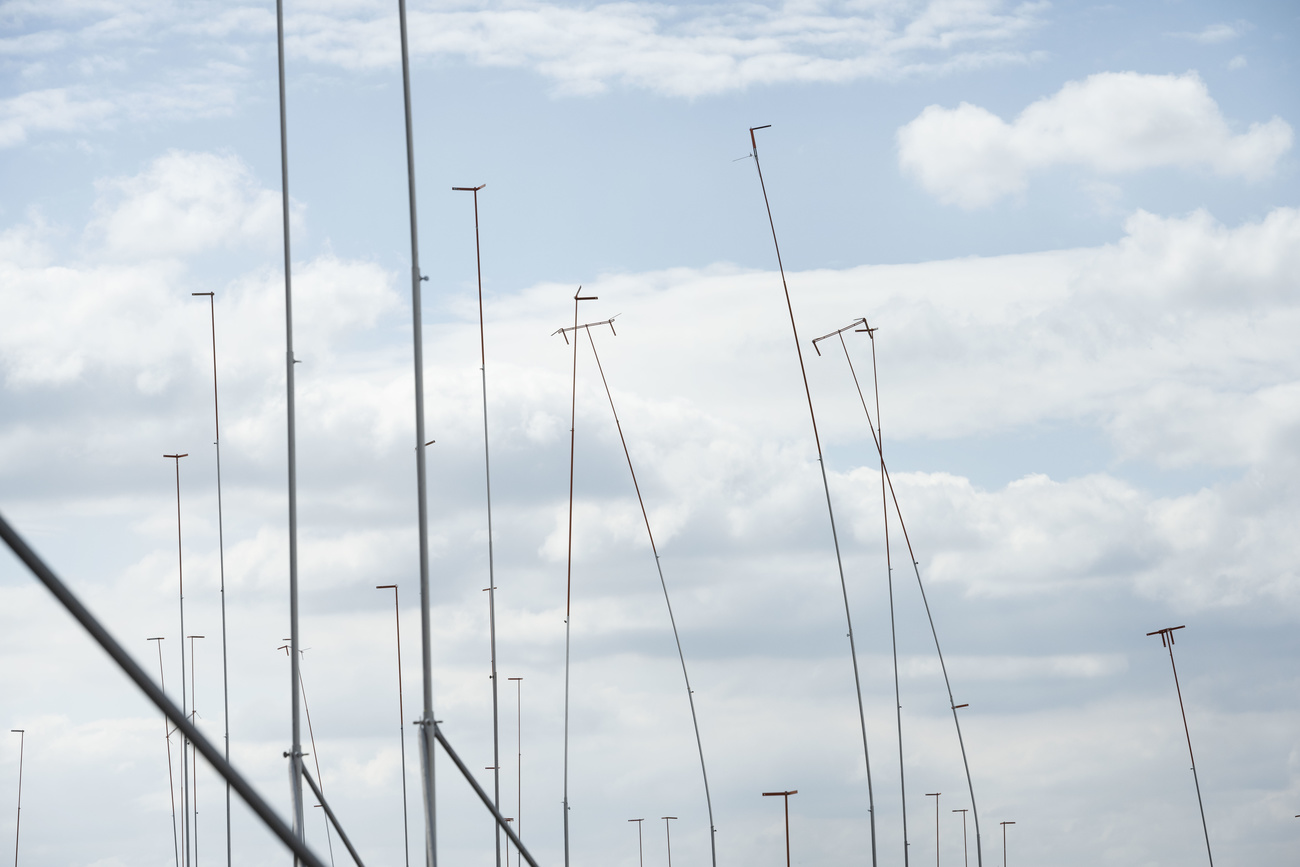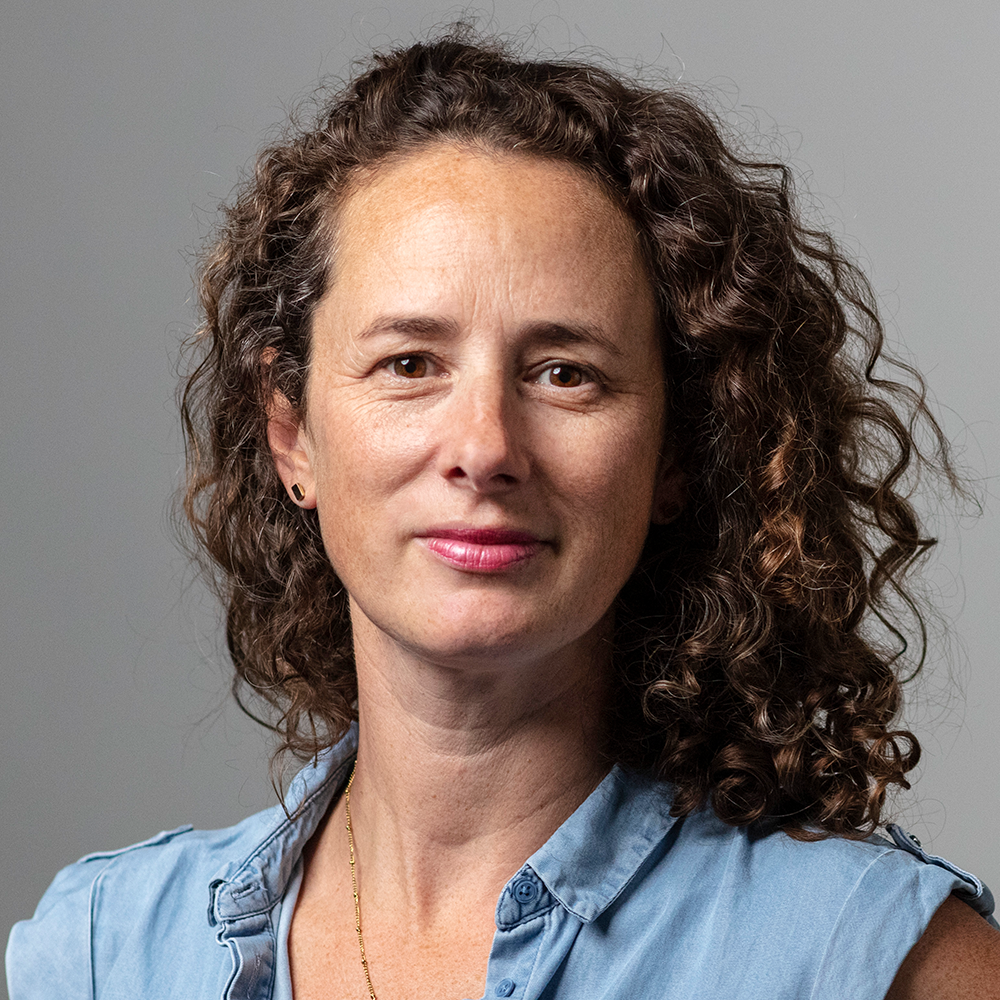Locarno puts Switzerland on the map

The Locarno film festival, one of Europe’s oldest, has risen from its humble beginnings to become one of Switzerland’s best-known cultural highlights.
However, history and circumstances have combined to ensure that it hasn’t quite reached the same league as its rivals Cannes and Venice.
For almost two weeks every August the normally tranquil lakeside town of Locarno in canton Ticino is transformed into a bustling film festival. Last year it attracted around 186,000 movie fans and almost 4,000 industry professionals to almost 500 showings.
And although not as large or as star-studded as some of the other festivals, Locarno attracts its fair share of big names. This year’s line-up includes actors John Malkovich and Susan Sarandon.
The festival has certainly come a long way since its birth in 1946, where just 15 films, including four Italian and six Hollywood movies, were shown in the town’s Grand Hotel.
According to Alfredo Knuchel, a former journalist and now filmmaker who has been involved with the festival for 35 years, Locarno was founded at just the right time.
The Venice film festival, which was created under Mussolini in 1932, was taking a post-war break – only a pared-down version was held in 1946 – and this allowed Locarno to jump in. It beat the newly-created Cannes festival by just one month.
“Locarno had the luck to be there at the right time when the films of the Italian new realism came up and that was the first glamour of Locarno,” said Knuchel.
Successes and troubles
Among Locarno’s early successes was discovering eastern European film in the 1950s and early 1960s, says Knuchel.
But the festival was also plagued by strong political and commercial pressures. Government financing only appeared eight years after it started and an official competition wasn’t launched until 1958.
The event’s emphasis on eastern European cinema also led to some allegations of its being a hotbed of communism at a time when the Cold War was at its height.
By the late sixties the Golden Leopard award had been inaugurated and the festival had moved to the Piazza Grande with its huge open air screen on the town square.
But the next few years were turbulent. Knuchel says one low point was when two co-directors moved the festival to October and tried to take it away from its popular roots. The following year the festival’s committee, not film professionals, tried to make the programme itself with disastrous results.
Moritz de Hadeln, later the head of the Berlin film festival, was subsequently appointed in 1972 to rescue the festival.
Reputation
According to Knuchel, Locarno really forged its reputation in the 1980s and 1990s under the direction of David Streiff. He was succeeded by Marco Müller, who currently runs Venice.
Knuchel said Streiff’s strategy was to make it the “smallest of the big and the biggest of the small”.
“Locarno had a very good name during the period of Streiff and Müller. It attracted young, rising independents from all over the world and highlighted Iranian film,” said Knuchel.
Müller, however, had bigger plans. He got Locarno placed on the International Federation of Film Producers Associations’ A list of festivals, putting it in the same league as Venice, Cannes and Berlin.
“This has become a problem for Locarno because it has the A status on paper, but in reality it doesn’t get the really important films,” said Knuchel.
This is something the festival acknowledges. Both its current director, Irene Bignardi, who is leaving this year, and its president Marco Solari have said that the town is too small and there are not enough funds to compete with the larger festivals. New festivals are also springing up.
Importance
But Knuchel says that the festival’s importance shouldn’t be downplayed.
“Locarno is still the biggest cultural event in Switzerland,” he told said. “It has become very well-known among film professionals and has definitely contributed to Switzerland’s name.”
And for festival president Solari, Locarno has a threefold effect.
“The economic impact is around SFr20-30 million ($16-24 million) each year,” Solari told swissinfo. “And what’s also important is the political and cultural impact for Ticino, this small Italian-speaking canton in Switzerland.”
swissinfo, Isobel Leybold-Johnson
The festival runs from August 3 to 13.
Seventeen films will be competing for the Golden Leopard award.
One of the films in competition is from Switzerland.
Eighteen films will be screened in Piazza Grande.
Three Leopards of Honour will be awarded.
Locarno was founded in 1946. It is attended by 186,000 visitors and up to 4,000 professionals. The main award is the Golden Leopard.
Cannes was also founded in 1946, a month after Locarno. The May festival is reserved for industry professionals and up to 30,000 attend each year. The prize is the Palme d’Or.
Venice was created in 1932. It takes place at in late August and early September and the winning film receives a Golden Lion.

In compliance with the JTI standards
More: SWI swissinfo.ch certified by the Journalism Trust Initiative










You can find an overview of ongoing debates with our journalists here . Please join us!
If you want to start a conversation about a topic raised in this article or want to report factual errors, email us at english@swissinfo.ch.